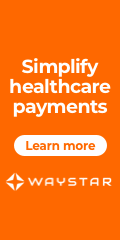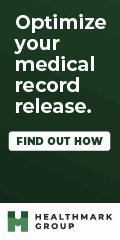From the PRM Pro 5/6/19
Want to Get Patients in the Office? Talk to Them Outside of It
By Jim Higgins
Jim Higgins is the CEO and founder of Solutionreach in Lehi, UT.

Do you ever wish you could just “swipe right” and magically find happy patients? If so, you’re not alone. Developing strong patient relationships is almost as hard as developing personal relationships. That’s because these are real relationships that need to be carefully nurtured and grown. Strong patient relationships have a huge impact on the success of your healthcare organization. And just like personal relationships, putting time and effort into your patient relationships is crucial to success.
Unfortunately, it is not uncommon for weeks, months, or even years (ouch!) to go by between patient visits. It is during these gaps that patients often decide to take their business elsewhere. In fact, the Patient-Provider Relationship Study found that one in three patients will change practices in the next couple of years. One way to help patients stay loyal to you is to reach out during that lull between visits. Email, phone, text message, social media, newsletters, patient portal, instant message …even old-school postcards. There are a ton of ways you can reach out to between visits. Of course, you want to use the most effective and time-efficient methods of communication.
What are those methods?
1. Personalized text messages — Texting has become pretty much ubiquitous. This means that it’s the perfect way to reach out to patients and feel confident that your message will be seen. Studies show that 98 percent of text messages are read. When using text for sending appointment reminders, set up messaging that feels more personal. Using dynamic appointment reminders can allow you to include information that is applicable to individual visits — reminders to fast before a patient arrives, for example. But think about using text messaging beyond just appointment reminders as well. Whether you send a birthday greeting, acknowledge a wedding anniversary, or congratulate a patient on their graduation, your kindness will go a long way toward cementing a real relationship with your existing patients.
2. Educational newsletters — In the Information Age, patients are out there searching for information on all sorts of health concerns every day. It’s no wonder that they appreciate it when they receive this information from their healthcare provider. Nearly all — 92 percent of patients — say that they feel more connected to a healthcare organization when they receive digital education. But, the hardest part about sending educational newsletters is consistency. To make it easy, put together a content library and deliver that information automatically over time. A tool that helps you create, schedule, and send your newsletters will make it even easier.
3. Social media — Americans spend enormous amounts of their time online connecting with other people. Facebook, Twitter, Instagram, Pinterest, Snapchat, Tumblr, Reddit, LinkedIn, YouTube … the list of ways we connect goes on and on. Patients don’t just want to connect with friends and family. They also want to connect with their healthcare practices online. This means that social media is no longer optional. It’s where your patients are hanging out, just waiting to hear from you. Not only does social media have the potential to boost patient trust levels, but it can also do the opposite. When a patient seeks you out on social media and you are not available, the message they receive is that “We do not want to connect with you.” Set up a schedule to post regularly — at least two times per week — and stay abreast of what your patients are saying online.
4. Mobile payments—You may not have ever considered billing to be a way to build stronger relationship with your patients, but it is actually one of the things that impacts patients the most! By connecting with patients the way they prefer to address billing issues, you can make a potentially hot-button issue much smoother. What do they want? Well, they really want it to be a whole lot more like they find in the retail and service world. Unfortunately, 77 percent of providers still use paper-based patient billing methods … even though the majority of patients say they would prefer to receive their bill online. This is troubling, especially when you look at a recent study which found that a whopping two out of three patients say they would switch healthcare providers for a better payment experience. Make your billing experience one that is the most convenient and desirable for patients and you’ll see some of those frustrations disappear.
Staying in contact with patients when they are away from your practice can be the difference between having them show up in your practice at all! Fortunately, there are lots of ways you can connect with patients year-round. And through the use of technology and automation, creating regular patient touchpoints can be efficient and easy.
Contacts
More news: HIStalk.
Get HIStalk Practice updates.
Contact us online.
Become a sponsor.








The article about Pediatric Associates in CA has a nugget with a potentially outsized impact: the implication that VFC vaccines…